The content is published under a Creative Commons Attribution Non-Commercial 4.0 License.
Reviewed Article:
Experimental Archaeology and the Sustainability of Dental Calculus Research: The Case of Chocolate and the Nuns Of S. Maria Della Stella’s Church, Saluzzo, Italy
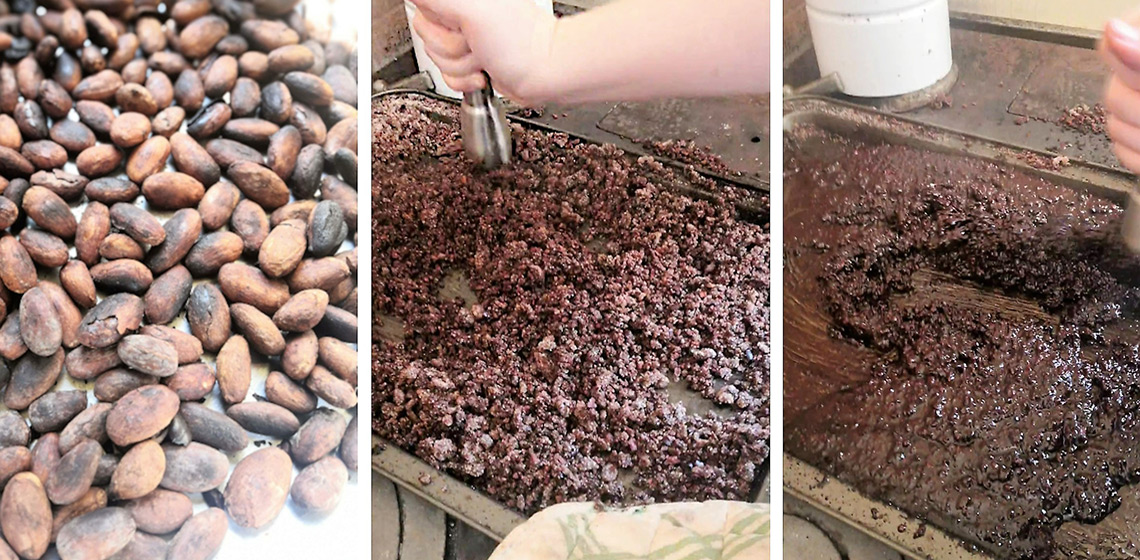
In Italy, chocolate (Theobroma cacao L.) was introduced during the Columbian exchange, and it quickly became both an important and accessible part of the Italian culinary tradition. Today, Italy is Europe’s second-largest chocolate producer. This project explored the potential of a new methodological approach to investigate the history of chocolate by combining experimental archaeology with micromorphological and chemical analysis of dental calculus from the skeletal remains of a post-medieval monastic community (Saluzzo, Italy) known from historical documents to have consumed chocolate products. Although the results obtained showed no traces of chocolate in the analyzed dental calculus from the nuns of Saluzzo, through experimental work, we were able to identify markers diagnostic for T. cacao both in the experimental chocolate recipes, which we recreated, and in modern dental calculus, showing the potential for the application of these methodologies.
Introduction
The Columbian exchange (1492–1800 AD) was a key historical period for the development of commercial relationships between the New and Old World, with the subsequent rise of globalization (Nunn and Qian, 2010; Mann, 2011; Brolin and Kander, 2022; Elshaikh, 2023). The most important environmental impact was the introduction of new crops, such as tomatoes (Solanum lycopersicum L.), chillies (Capsicum annuum L.), cacao beans (Theobroma cacao L.) and maize (Zea mays L.), which transformed European eating habits. Nonetheless, little is known about the process whereby these crops become part of the cultural and culinary traditions.
In the case of chocolate (T. cacao L.), the cultural transmission of its value and taste occurred thanks to the informal and formal relationships that emerged between Europeans and Native American populations. Spanish people were the first to learn how to treat cocoa beans in order to obtain products that tasted good (Norton, 2006); starting from 1660, chocolate acquired a crucial role from a social and political point of view, as a stimulating beverage, expensive foodstuff, and a method of exchange, especially across Europe’s aristocratic courts and clerical class (Lippi, 2013; Loveman, 2013; 2022; Verna, 2013). In Italy, chocolate was introduced thanks to the political and economic relations between Spanish and Savoy courts. In the middle of the Baroque age, the fashion for drinking chocolate spread rather rapidly among courts, nobles, clergy and convents of the various states of the Italian peninsula. Northern Italian chocolatiers’ recipes were claimed to be popular throughout Europe; Venice, and Florence, and Turin also introduced some of the first European cafés which have contributed to making chocolate a more accessible food even to the lower social classes ( Mazzolini and Meldolesi, 2004; Korten, 2017; Cavallera, Conca Messina and Raviola, 2019). Italy, therefore, has a very important tradition linked to the consumption of chocolate, so much so that today, the country ranks as Europe’s second-largest chocolate producer (CBI, 2020).
The archaeological excavation of a post-medieval cemetery of a Nunnery near Saluzzo (Piedmont, Italy) and the recovery and study of the historical archives containing information about the diet of this cloistered community, including reports that nuns had access to foods considered "lustful" (such as chocolate) in the 18th century, which provided us with the opportunity to explore archaeological methods of finding bio-archaeological evidence of the consumption of this product in the nuns’ dental calculus. To do so, however, it was first necessary to understand whether this type of food could leave traces of its presence in the archaeological record. The following research proposes different analyses:
- Experimental archaeology and the compilation of a reference collection. Here we aimed to recreate ancient chocolate recipes and to then analyze the final products under a transmitted-light polarizing optical microscope to look for diagnostic micro-debris that could indicate chocolate consumption, and use this reference collection as a comparison for the micro-débris found in the dental calculus of the nuns of Saluzzo.
- Micromorphological and lipidic analysis of dental calculus. Dental calculus, a mineralized biofilm deposited on the surface of the teeth due to the presence of bacterial plaque and calcium salts in saliva (White, 1997), has acquired great value in bio-archaeological research in recent decades as an archive of "micro-débris" of animal, vegetable, mineral origin and sub-fossil biomolecules, which can be studied in order to reconstruct the different aspects of the lifestyle of ancient human populations (Hardy, et al., 2009; Warinner, Speller and Collins, 2015; Radini, et al., 2017; Radini and Nikita, 2023). Here, we attempted to trace micro-débris and chemical markers found in chocolate which might have been preserved within the inorganic matrix of dental calculus, hence providing evidence for the consumption of chocolate.
Material and methods
The experimental project and reference collection
The first step to set up the experimental archaeology part of the project was to search for historical recipes from the 17th–18th century, with a particular focus on the ones that refer to chocolate as an ingredient for sweet recipes. An idiosyncratic collection of recipes in Piedmont, “Il cuoco piemontese perfezionato a Parigi” (transl. “The Piedmontese chef perfected in Paris”), 1766, is considered to be a milestone of information for culinary art and for the changes that characterized the centuries after the Columbian exchange. It was written by an anonymous piedmontese chef who worked for years in Paris and decided to write a series of recipes which involved local products from the piedmontese area (Serventi, 1995). Here it is possible to find a selection of sweet dishes using chocolate mixed with other ingredients such as vanilla, cinnamon, pistachio, and milk. Another important volume of the time was “Il confetturiere piemontese che insegna la maniera di confettare frutti in diverse maniere, far biscottini, marzapani, canestrelli, acquavita, sorbetti e molte altre cose appartenenti a tal arte” (transl. “Piedmontese confectionery who teaches the art of making fruit jam in different ways, biscuits, marzipan, canestrelli, brandy, sorbets and many other things belonging to this art”), 1790, also written by an anonymous piedmontese chef, in which there are several recipes that attest to preparations that are still famous today in piedmontese gastronomy, such as canestrelli and vin brûlé.
These two volumes were used as a base to set up the experimental project and select the recipes that we wanted to recreate (See Table 1).
| Recipe volume | Recipe name | Short description | Ingredients |
| "Il confetturiere piemontese" | Chocolate bar | Rectangular bar of chocolate, made with special molds. Used as a starting product for the other processes | Cocoa beans, sugar |
| Chocolate biscuits | Soft chocolate disks similar to sponge cake with a caramelized surface. | Grated chocolate bar, sugar, eggs, flour | |
| Diablottini | The first chocolates produced in Turin, they are believed to be the ancestors of the gianduiotto (a typical Piedmontese culinary product). They can be flavored with the addition of cinnamon or pistachio. | Chocolate bar, olive oil, sugar praline, pistacchio, cinnamon | |
| "Il cuoco piemontese" | Hot chocolate | Beverage made with chocolate and milk, usually consumed hot | Grated chocolate bar, milk |
Table 1. List of the ingredients required for each recipe that was recreated during the experiment and from which catalog they were selected.
Below we report the various steps required for each recipe:
- Chocolate bar. The chocolate seeds were toasted on a lacquered clay container in direct contact with fire. The peel of the cocoa beans was removed with bare hands, without the aid of a special tool, and the cocoa beans were pulverized using a mortar and pestle. The cocoa powder, mixed with sugar (according to the recipe, 330 g of sugar per 453.6g of chocolate), was placed on a hot plate in contact with the fire on a low flame (contact with the heat allows the cocoa powder to melt, and the presence of sugar caramelizes and sweetens the cocoa). The cocoa was distributed evenly on the plate to avoid burning and mixed well with the sugar. The cocoa and sugar mixture was then poured into (modern) rectangular molds and left to set for a couple of days to obtain the chocolate bars.
- Chocolate biscuits. The chocolate bar was grated, then sugar and 4 egg yolks were added. These were mixed inside a pot with a spatula, and egg whites from 8 eggs were then added. Once a homogeneous mixture was obtained, wheat flour was added, then disks were created with the dough. The surface was covered with some sugar and cooked in a wood fired oven, on a low flame.
- Diablottini. A chocolate bar was melted near a heat source. Part of the chocolate was scooped up with a spoon and, with hands greased with olive oil, it was worked into a rounded shape ("shape of small olives"). The surface was covered with sugar praline and left to dry near a stove. A whole pistachio (without its skin) or grated cinnamon were added to the mixture to add more flavor.
- Hot chocolate. Some chocolate was grated into a container. Hot milk was boiled on wood fired oven and once it reached the boil, milk was poured over the chocolate and beaten for 15 minutes to create a sort of foam. The same procedure can be done by replacing milk with water.
Once we obtained every product of interest, we proceeded with the analysis using a transmitted-polarized optical microscope. We sampled a small portion of each of the products produced, pulverized them using a mortar and pestle to simulate the action of the masticatory apparatus, then we mounted the sample on a slide with mounting fluid consisting of 50:50 water and glycerol to raise the refractive index of the mounting media to obtain brighter and higher resolution images and upgrade the time of conservation of the samples. The slide was observed and all the types of micro-débris identifiable within it was reported, assigning each one a name and a brief description. This reference collection is an important tool to use to compare modern material with what is found in dental calculus to aid in the identification of ancient micro-débris.
Dental calculus sampling and micromorphological analysis
This study analyzes the dental calculus present and preserved at the level of the mandibular and maxillary arches of the skeletons of the nuns of the Church of Santa Maria della Stella, who lived in the 18th century. Sampling of ancient dental calculus was done following methodologies applied by previous dental calculus analysis (Cristiani, et al., 2016), at the ArchaeoBiomics Laboratories, Department of Life Science and Systems Biology, University of Turin. Working in a protected environment with aluminum foil, dental calculus was sampled using a dental instrument and placed inside an eppendorf tube. We sampled dental calculus from a total of 11 individuals (See Table 2).
| Individual | Age at death | Tooth | Micromorphological analysis | Sequential Thermal Desorption and Pyrolysis Gas Chromatography-Mass Spectrometry |
| T17 | >50 | 1 M dx mx | yes | yes |
| T18 | 55-60 | 3M dx mn | yes | yes |
| T19 | 35-44 | 1Pm dx mn | yes | no |
| T20 | 20-25 | 1M dx mx | yes | yes |
| T21 | 20-25 | 1M sx mx | yes | yes |
| T24 | 25-30 | 1M sx mx | yes | yes |
| T33 | 35-45 | 2Pm dx mx | yes | yes |
| T39 | 30-40 | 1M sx mx | yes | no |
| T40 | 22-28 | 3M dx mn | yes | yes |
| T45 | 50-60 | 1M dx mx | yes | yes |
| T49 | 20-24 | 2M sx mx | yes | yes |
| MN1 | 50-60 | 1M dx mn | yes | yes |
Table 2. Individuals sampled for dental calculus analysis. When possible, dental calculus was sampled from the molars. Since the accumulation of dental calculus takes a long period of time and it is not possible to know which part of an individual's life is represented, by combining the time window between the age of tooth eruption and the age at death of each individual, we can reduce the degree of uncertainty and be sure that the micro-débris identified within the tartar are effective evidence of the diet consumed by the women after taking the nun's habit. M = molars; Pm = premolars; dx = right; sx = left; mx = maxilla; mn = mandible
The steps of decontamination (to remove burial and environmental contaminants) consisted of using ultrapure water and sodium hypochlorite with an acupuncture needle. Decalcification of the inorganic matrix was done using a solution of 0.6 M sodium hypochlorite HCl. After 1-2 weeks, the supernatant was mounted on a glass slide. The micromorphological analysis was conducted using the Leica ICC50 W microscope. A scan of the entire slide was performed at 400x magnification, recording important findings with photographs and written notes in which a description of the micro-débris of interest was reported. When necessary, 1000x magnification (with oil immersion) was used to observe particularly small débris in detail. On the basis of the shape, size, color and other characteristics observed under the optical microscope with transmitted light, various "morphotypes" were identified, each of which was assigned a name and a description. A quantitative analysis was carried out for each slide, verifying the number of micro-débris present for each morphotype identified. Once all the débris was recorded, two built for the purpose reference collections were used to conduct any identification possible: 1. a built for the purpose reference collection at the University of Turin that was strongly based on historical records of food and material culture available to the population studied; 2. a very large one compiled by Dr Radini at the UCD School of Archaeology was also put at disposition of this project. Furthermore, published atlases and papers on the subject of microarcaheology were also consulted.
Sequential Thermal Desorption and Pyrolysis Gas Chromatography-Mass Spectrometry (TD/Py GC-MS)
The efficiency of using TD/Py-GC-MS to identify lipidic components in dental calculus has been shown in several publications, attesting also to the longevity of lipid compounds (see e.g., Hardy, et al., 2012; 2016; Buckley, et al., 2014; 2021). Sequential TD/Py-GC-MS requires very small quantities of sample for analysis and minimal sample for pre-treatment, reducing the risk of contamination and sample loss. The combination of thermal desorption and pyrolysis GC-MS allows rapid identification of a wide range of ‘free’/unbound and bound/polymeric organic components (Buckley, Stott and Evershed, 1999).
In this study, we used Sequential TD/Py-GC-MS to attempt to identify biomarkers for chocolate in dental calculus samples from ten of the nuns buried at S. Maria della Stella, Saluzzo. Between 2.0 and 4.8 mg of dental calculus was weighed, depending on availability, and analyzed using a micro-furnace EGA/PY-3030D pyrolyzer (Frontier Lab, Japan) interfaced with a 8890 Gas Chromatograph (GC) System (Agilent Technologies, USA) equipped with DB-5HT fused silica capillary column (30 m, 250 µm i.d.) coated with 0.25 μm 5% phenyl methyl silicone, and an Agilent 5977B Mass Selective Detector (source temperature 230°C, quadrupole temperature 150°C, MSD transfer line temperature 280°C). The sample was thermally desorbed at 310°C for two minutes in open split mode. The GC temperature programme and data acquisition commenced at the same time. The GC oven was initially held at 45°C for five minutes and then ramped at 6°C per minute to 320°C, then held for 15 minutes. Helium was used as the carrier gas at a constant flow of 1 ml/min. The run was repeated using the same sample, which was pyrolysed at 610°C for 12s with the split open. Peaks were identified based on their mass spectra using the National Institute of Standards and Technology library (NIST 2014) and published literature (e.g. Hurst, et al., 1989; 2002; Crown and Hurst, 2009; Washburn, et al., 2014; Kaplan, et al., 2017; Ford, Williams and De Vries, 2022). In addition, two modern dental calculus samples were analyzed, as well as a caffeine standard and pure Theobroma cacao.
Results
The experimental archaeological phase required a total of 1 week to complete; the production of the chocolate bars was the one that took the most time. The process of roasting and caramelizing cocoa required great attention in that the seeds needed constant turning to reduce the risk of burning the product and, therefore, giving the chocolate a bitter taste (See Figure 1). The product obtained was very similar to dough, with a viscous and dense appearance. Once it was placed in the molds, we waited 1-2 days for it to reach a solid state. The final product obtained was two rigid bars, difficult to work with using only the heat of the hands, unlike the bars obtained with modern industrial production processes. The realization of the remaining products (biscuits, Diablottini and hot chocolate) required only one day of preparation (See Figure 2). The use of a wood fired oven made it possible to evenly distribute the heat for cooking the biscuits, which had a consistency similar to modern sponge cake rather than biscuits produced by modern industrial chains. Despite the hardness that characterized the chocolate bar, the preparation of the diablottini (which involved working the chocolate with the use of the hands) was facilitated by the use of olive oil, as suggested by the original recipe.
The optical microscope observation of the products obtained from experimental archeology allowed the identification of various micro-débris in the compilation of the reference collection. In particular, it was possible to observe and identify a total of five morphotypes (See Appendix 1): four morphotypes were identified as starch granules (See Figure 3, a-d), and 2) one morphotype was identified as a micro-charcoal (morphotype n.5, fig. 3, e), a burnt organic substance derived from the various cooking processes applied during the production of culinary products. Plants produce starch grains to amass energy, and they are found in most plant tissues, particularly in storage and reproductive organs such as rhizomes, tubers and seeds. They can be used as markers of diet because their morphology and features provide a means to identify the plant that produced them (Henry and Piperno, 2008; Hardy, et al., 2009; Copeland and Hardy, 2018). We report here a description of the starch granules using the ICSN (International Code for Starch Nomenclature) (FARM, 2011).
- Morphotype n.1: simple starch grain, circular, 17 μm diameter, symmetric and centric extinction cross (See Figure 3a). This morphotype was found only in the biscuits. In some, it was possible to observe the loss of a clear, geometrically defined shape and structure, with lamellae being more visible (See Figure 3f) showing that they had reached the gelatinization phase due to the cooking process.
- Morphotype n.2: simple starch grain, circular, 22 μm diameter, symmetric and eccentric extinction cross. This morphotype had a fracture along the external perimeter, probably the result of the processing methodology (See Figure 3b). This morphotype was found only in the biscuits.
- Morphotype n.3: simple starch grain, oval, major axis length 15 μm, symmetric and centric extinction cross, with a fracture that follows the major axis (See Figure 3c). This morphotype was found only in the biscuits.
- Morphotype n.4: simple starch grain, circular shape with sharp-edged corners, 4 μm diameter, symmetric and eccentric extinction cross (See Figure 3d). This morphotype was found in the Diablottini and the chocolate beverage.
- Morphotype n.5: in this category, we found micro-débris that might differ greatly in size and shape but have the same colour grading, from dark-brown to black (See Figure 3e). It does not react to polarized light under the optical microscope. Identified as micro-charcoal.
Comparing our results with previous research (Henry, Hudson and Piperno, 2009; Dai, et al., 2013; Mickleburgh, et al., 2019) we hypothesized that morphotypes n.1, 2 and 3 may possibly be derived from flour used for biscuits (Triticum aestivum). In the case study of Zarrillo, et al. (2018), one of the descriptions given to Theobroma spp. starch granules correspond to the description of morphotype n.4, with a slightly polygonal shape and dimensions between 3.8–8 μm, so we can hypothesize that it is derived from T. cacao. Some of the morphotype n.4 starches that we found in the Diablottini and chocolate beverage presented some morphological alterations, such as non-defined extinction lines and the presence of fractures on the granules’ boundary that can possibly derive from the grinding and toasting process used to process the cocoa seeds and can also explain why these starches were absent in biscuits. It is possible that the baking processes caused alterations, which made T. cacao starches unrecognizable. However, it will be necessary to expand our reference collection to better understand how different cooking processes affect starch preservation.
The micromorphological study of the archaeological dental calculus revealed the presence of micro-débris of animal, mineral and plant origins. In the latter case, we identified morphotypes that indicate the consumption of a diet rich in plant foods: the majority of the micro-débris observed remain a-diagnostic because taxonomic identification was not possible (See Figure 4, a-c). However, 3 morphotypes presented morphological characteristics that made it possible to hypothesize the plant of origin. Here we report a description of each morphotype (See Figure 4, d-f):
- Morphotype n.1: simple starch grain, 28 μm diameter, oval but the shape was not well defined because of the presence of ragged edges, which probably derived from damage during the cooking process (See Figure 4d). A centric hilum is visible. This morphotype was found in a total of six individuals and was interpreted in comparison with previous studies (Henry, Hudson and Piperno, 2009) and based on our reference collection. Their morphology is similar to the Poaceae family, in particular, the Triticum genre.
- Morphotype n.2: simple starch grain, major axis length between 10-16 μm, polygonal-pentagonal shape (See Figure 4e). In some cases, a centric hilum is visible. Found in a total of six individuals, it probably derived from the consumption of Z. mays. The pentagonal shape is characteristic of this food, as supported by other case studies in which Z. mays starches were identified in the dental calculus matrix (Wesolowski, et al., 2010; Mickleburgh and Pagán-Jiménez, 2012).
- Morphotype n.3: simple starch grain, major axis length between 20-26 μm, oval shape and a knobby surface (See Figure 4f). This gelatinized starch granule (damaged by the cooking process) was found in seven individuals and was interpreted based on comparison with previous studies (Henry, Hudson and Piperno 2009). It was identified as Fabaceae starch.
Unfortunately, none of the 11 individuals analyzed showed the presence of chocolate micro-débris; however, the accumulation of débris in calculus is a random process (Radini, et al., 2017), so it is possible that the consumption of cocoa products did not leave any visible traces.
Using TD/Py-GC-MS, caffeine was identified in one of the two modern dental calculus samples studied. Theobromine and caffeine (but not theophylline) were identified in the T. cacao sample analyzed. Unfortunately, none of the three methylxanthine biomarkers were identified in the dental calculus of the ten nuns selected for this study. As indicated above, although direct evidence for the consumption of chocolate was not obtained, this does not necessarily mean that the nuns did not consume it, but consumption was probably too occasional for chemical signatures to have been retained.
Discussion
Chocolate is one of the most important products of the Italian culinary tradition, with important economic and political implications; therefore investigating the history of its consumption, both from a historical and archaeological point of view, is essential for understanding and reconstructing Italian history. The case study of Santa Maria della Stella has given us the opportunity to develop and apply an innovative method of analysis to investigate the consumption of chocolate. Ours is the first case to date in which traces of this food are sought from dental calculus, combining micromorphological and chemical analyses.
The results obtained by experimental archaeology and the reference collection shows us that it is possible to visualize some micro-débris considered diagnostic for the identification of plant species; however it is important to remember that starch grains are susceptible to damage when they are exposed to heat in the presence of water, as in cooking (Henry, Hudson and Piperno, 2009; Collins and Copeland, 2011; Crowther, 2012; Barton and Torrence, 2015). A research study conducted by Dai, et al. (2013) showed that starch grains from wheat are found to be structurally more vulnerable to the cooking process with swelling, gelatinization and the loss of the extinction cross. The same pattern was observed in our case study, where starch granules identified as T. aestivum showed a more gelatinized appearance with lamellae visible, loss of the peculiar spherical shape, presence of cracks and vague and confused extinction lines. To our knowledge, there is no previous research on changes in cocoa starch grains using different cooking methods, however, starch grains that were identified as T. cocoa in our study show non-defined extinction lines and the presence of fractures on the granules’ boundary. Further work is required to explore potential diagenetic processes that modify the morphology of starch grains.
Since we know, from historical documents, that the nuns at S. Maria della Stella (Saluzzo) had access to chocolate, we tried to verify if cocoa starch granules could be identified with the inorganic matrix of dental calculus. The analysis of the archaeological dental calculus from the monastic community allowed us to identify the consumption of different crops, including the Poaceae family (which includes genus Triticum). Other previous studies showed that it is possible to recover Triticum starch granules from dental calculus (Cristiani, et al., 2016; Gismondi, et al., 2018; 2020). There are few previous studies characterizing T. cacao seed starches from archaeological contexts. In Zarrillo, et al. (2018) cocoa starches were recovered from artifacts from a site in southeast Ecuador, and in Mickleburgh, et al. (2019), one single starch grain was recovered from dental calculus from Jamaica and tentatively identified as cocoa, but it was affected by pressure from grinding processes. The absence of micro-débris derived from chocolate can be explained by different causes: we hypothesized that not all nuns had access to the same foods due to internal hierarchy or, because chocolate products were gifts received from pastoral visits, the nuns had limited access to this semi-luxury food. Moreover, since the accumulation of débris in calculus is a causal event, interpretations of diet based only on microfossil material should be viewed with caution, as it does not offer us a quantitative interpretation of the type of the food they had access to.
We hypothesized that since the nuns at S. Maria della Stella, Saluzzo had access to chocolate, chemical traces of this product might have become trapped within their dental calculus, hence the possibility of retrieving a chemical signature using sequential TD/Py-GC-MS. To our knowledge, this has not been attempted using sequential TD/Py-GC-MS before, although several studies have identified theobromine, theophylline and caffeine, the main methylxanthine biomarkers in cocoa, from ceramic containers using spectroscopic methods (e.g.Hurst, et al., 1989; 2002; Crown and Hurst, 2009; Kaplan, et al., 2017; Ford, Williams and De Vries, 2022). Positive identification for chocolate using these methylxanthine biomarkers is still problematic, in particular in terms of potential modern contamination since caffeine, for example, is widespread in modern environments, detectable in urban air, and can be introduced as a contaminant. Airborne contamination of theobromine, theophylline and caffeine was indeed confirmed by dust studies carried out at six different institutions and on vessels whose geographic origin and age precluded the presence of cacao, yet these methylxanthine biomarkers were still identified (caffeine in higher quantities than theobromine and theophylline), albeit in lower quantities than those found in archaeological samples (Washburn, et al., 2014). Caffeine is also very soluble in water and, therefore likely to be lost over archaeological timescales (Whealton, et al., 2021), although this theory is contradicted by the study of Reber and Kerr (2012) who carried out experimental work on Black Drink, a native North American caffeinated tea produced from the leaves of Ilex vomitoria, where caffeine was found to persist in archaeological pottery after a two-month burial period. Moreover, methylxanthines have been reported to adhere tightly to acidic cations present in the clay matrix (Washburn, et al., 2014). Theobromine is present in chocolate in higher quantities than caffeine (8:1 theobromine:caffeine ratio; although this may vary) (King, et al., 2017), however both methylxanthine compounds are found in several plant species and the identification of chocolate also depends on the ratio in which these two compounds are found. This can however be altered due to wash out of both markers from pottery due to rainfall and specific soil chemistry, making it difficult to accurately interpret the data obtained (Reber, 2022, pp.70-74). Furthermore, analysis carried out by Washburn, et al. (2014) showed that bacteria in the soil breaks down theobromine, theophylline and caffeine, thus changing their concentration over time. The use of theophylline as a specific marker for chocolate (Edwards and Bennett, 2005) has also been questioned (King, et al., 2017).
Nevertheless, the identification of theobromine and caffeine in the modern dental calculus and T. cocoa analysed in this study show the potential of using Sequential TD/Py-GC-MS to assess the presence of methylxanthine biomarkers in dental calculus. Moreover, while Sequential TD/Py-GC-MS still retains some of the problems associated with the identification of chocolate portrayed above, the minimal processing required for this technique already resolves some of the contamination questions addressed by previous research (King, et al., 2017). Further research is required to test how theobromine, theophylline and caffeine behave when adhered to dental calculus as a substrate, in comparison to ceramics, and if this material can provide a better proxy for direct confirmation of the consumption of chocolate.
Conclusion
Our main goal was to investigate if it was possible to find archaeological traces of the consumption of chocolate. This product was chosen as the focus of our research because it is an important part of the Italian culinary tradition and culture, renowned and consumed internationally, therefore it is important to investigate the history of its importation and spread across the country. We proposed a first attempt to develop an innovative approach for the reconstruction of ancient culinary traditions by combining experimental archaeology with micromorphological and chemical analysis of dental calculus to identify possible bio-archaeological markers. The results obtained by the analysis of archeological dental calculus from the nuns of S. Maria della Stella showed no traces of chocolate, however several factors may have influenced the ancient results, such as a low consumption of the product by the monastic community. We, however, demonstrated the possibility of identifying starch granules diagnostic for T. cacao in the recipes we recreated and the identification of markers, such as theobromine and caffeine, in modern dental calculus and T. cacao, showing that the applied methodology has a positive potential. It will be necessary in the future to refine and develop this methodology, expanding the research to other case studies.
Acknowledgments
We would like to thank the EXARC community for their support and for allowing us the opportunity to work on this research project. Part of this work was also supported by the Royal Society of Edinburgh and the project “From Text to Teeth: the nuns of S. Maria della Stella”. The authors would like to thank Dr. Alfredo Santovito who helped us and provided the infrastructure which was needed for the micromorphological analysis process; F.T. studio and Dr. Alessandra Cinti for having granted the study of the monastic community; Prof. Andrea Quaglieriello who provided modern material for the chemical analysis. A special acknowledgement goes to “Superintendence of archaeology, fine art and landscape for the provinces of Alessandria, Asti and Cuneo”, to “Fondazione Cassa di Risparmio di Saluzzo” and Dr. Michele Scanavino for making this study possible.
Country
- Italy
Appendix 1
| Morphotype | Product | Description | Origin | Photo | Photo (Polarizer) |
| 1 | Biscuits | Simple starch grain, circular, 17 µm diameter, symmetric and centric extinction cross. | Trititcum aestivum | 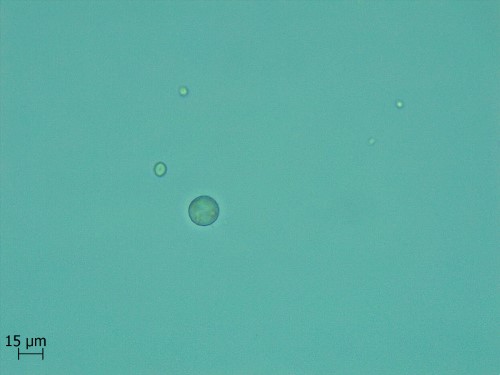 | 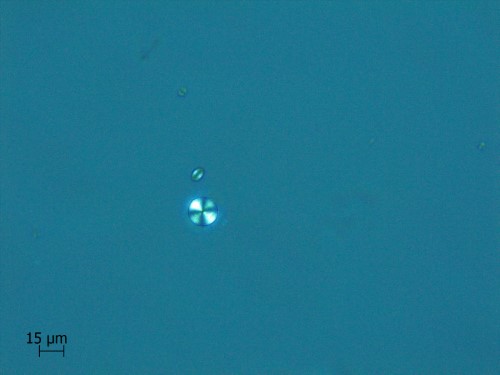 |
| 2 | Biscuits | Simple starch grain, circular, 22 µm diameter, symmetric and eccentric extinction cross. It has a fracture along the external perimeter, probabily the results of some processing methodology. | Trititcum aestivum | 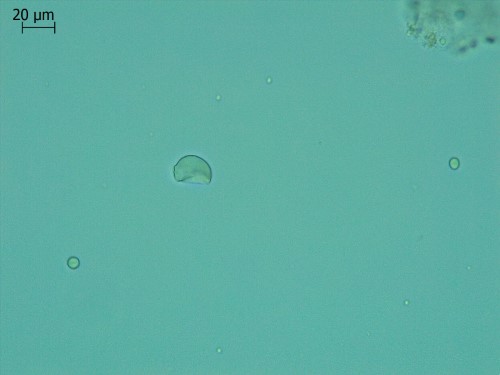 | 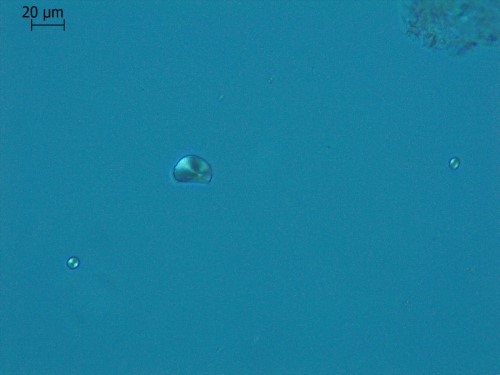 |
| 3 | Biscuits | simple starch grain, oval, major axis length 15 µm, simmetric and centric extinction cross, with a fracture that follows the major axis. | Trititcum aestivum | 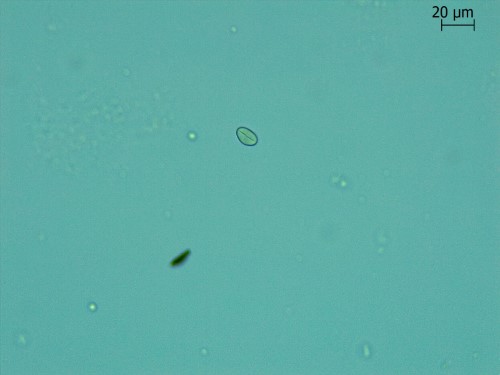 | 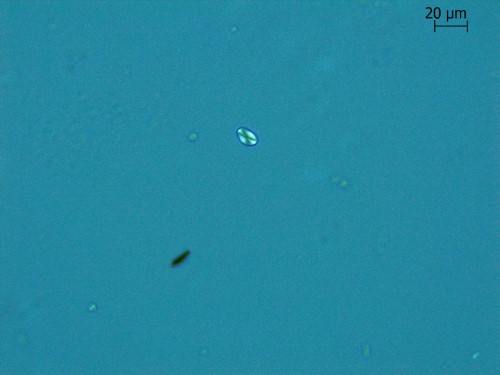 |
| 4 | Chocolate bar and beverage, Diablottini | simple starch grain, circular shape with sharp-edged corners, 4 µm diameter, symmetric and eccentric extinction cross. | Theobroma cacao | 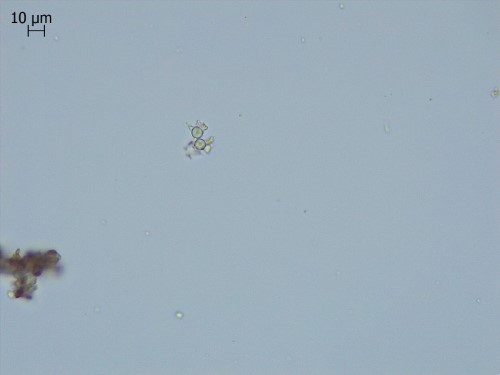 | 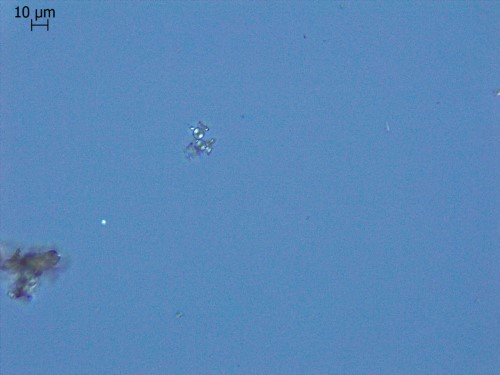 |
| 5 | Biscuits, Chocolate bar and beverage | burnt organic substance derived from the various cooking processes. Don't react to polarized light | Micro-charcoal | 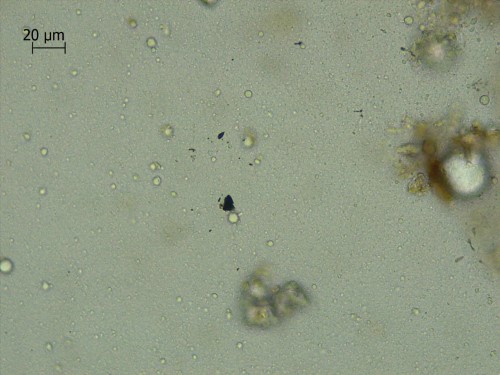 |
Bibliography
Barton, H., and Torrence, R., 2015. Cooking up recipes for ancient starch: Assessing current methodologies and looking to the future. Journal of Archaeological Science, 56, pp.194-201.
Brolin, J. and Kander, A., 2022. Global trade in the Anthropocene: A review of trends and direction of environmental factor flows during the Great Acceleration. The Anthropocene Review, 9(1), pp.71-110. < https://doi.org/10.1177/2053019620973711 >
Buckley, S., Power, R.C., Andreadaki-Vlazaki, M., Akar, M., Becher, J., Belser, M., Cafisso, S., Eisenmann, S., Fletcher, J., Francken, M., Hallager, B., Harvati, K., Ingman, T., Kataki, E., Maran, J., Martin, M.A.S., McGeorge, P.J.P., Milevski, I., Papadimitriou, A., Protopapadaki, E., Salazar-García, D.C., Schmidt-Schultz, T., Schuenemann, V.J., Shafiq, R., Stuijts, I., Yegorov, D., Yener, K.A., Schultz, M., Spiteri, C. and Stockhammer, P.W., 2021. Archaeometric evidence for the earliest exploitation of lignite from the bronze age Eastern Mediterranean. Scientific Reports, 11, article number: 24185. < https://doi.org/10.1038/s41598-021-03544-w >
Buckley, S.A., Stott, A.W. and Evershed, R.P., 1999. Studies of organic residues from ancient Egyptian mummies using high temperature-gas chromatography-mass spectrometry and sequential thermal desorption-gas chromatography-mass spectrometry and pyrolysis-gas chromatography-mass spectrometry. Analyst, 124, pp.443-452. < https://doi.org/10.1039/a809022j >
Buckley, S., Usai, D., Jakob, T., Radini, A. and Hardy, K., 2014. Dental Calculus Reveals Unique Insights into Food Items, Cooking and Plant Processing in Prehistoric Central Sudan. PLOS ONE, 9(7), article number: e100808. < https://doi.org/10.1371/journal.pone.0100808 >
Cavallera, M., Conca Messina, S.A. and Raviola, B.A. eds., 2019. Le vie del cibo : Italia settentrionale : (secc. 16.-20). Roma: Carocci editore.
CBI, 2020. The Italian market potential for cocoa. [online] Netherlands: Ministry of Foreign Affairs. Available at: < https://www.cbi.eu/market-information/cocoa-cocoa-products/italy/market… > [Accessed 6 July 2023].
Collins, M.J. and Copeland, L., 2011. Ancient starch: Cooked or just old? Proceedings of the National Academy of Sciences, 108(22), p.E145.
Copeland, L. and Hardy, K., 2018. Archaeological Starch. Agronomy, 8(1), article number: 4. < https://doi.org/10.3390/agronomy8010004 >
Cristiani, E., Radini, A., Edinborough, M. and Borić, D., 2016. Dental calculus reveals Mesolithic foragers in the Balkans consumed domesticated plant foods. Proceedings of the National Academy of Sciences, 113(37), pp.10298-10303. < https://doi.org/10.1073/pnas.1603477113 >
Crown, P.L. and Hurst, W.J., 2009. Evidence of cacao use in the Prehispanic American Southwest. Proceedings of the National Academy of Sciences, 106(7), pp.2110-2113. < https://doi.org/10.1073/pnas.0812817106 >
Crowther, A., 2012. The differential survival of native starch during cooking and implications for archaeological analyses: a review. Archaeological and Anthropological Sciences, 4, pp.221-235. < https://doi.org/10.1007/s12520-012-0097-0 >
Dai, J., Yang, Y., Wang, B., Wang, C. and Jiang, H., 2013. Changes in wheat starch grains using different cooking methods: Insights into ancient food processing techniques. Chinese Science Bulletin, 58(S1), pp.82-89. < https://doi.org/10.1360/tb-2013-suppl003 >
Edwards, A.L. and Bennett, B.C., 2005. Diversity of Methylxanthine Content in Ilex cassine L. and Ilex vomitoria Ait.: Assessing Sources of the North American Stimulant Cassina. Economic Botany, 59, pp.275-285. < https://doi.org/10.1663/0013-0001(2005)059[0275:DOMCII]2.0.CO;2 >
Elshaikh, E.M., 2023. The Columbian Exchange. [online] Available at: < https://www.khanacademy.org/humanities/whp-origins/era-5-the-first-glob… > [Accessed 15 March 2023].
Ford, A., Williams, A. and De Vries, M.S., 2022. New light on the use of Theobroma cacao by Late Classic Maya. Proceedings of the National Academy of Sciences, 119(40), article number: e2121821119. < https://doi.org/10.1073/pnas.2121821119 >
Gismondi, A., D’Agostino, A., Canuti, L., Di Marco, G., Martínez-Labarga, C., Angle, M., Rickards, O. and Canini, A., 2018. Dental calculus reveals diet habits and medicinal plant use in the Early Medieval Italian population of Colonna. Journal of Archaeological Science: Reports, 20, pp.556-564. < https://doi.org/10.1016/j.jasrep.2018.05.023 >
Gismondi, A., D’Agostino, A., Di Marco, G., Martínez-Labarga, C., Leonini, V., Rickards, O. and Canini, A., 2020. Back to the roots: dental calculus analysis of the first documented case of coeliac disease. Archaeological and Anthropological Sciences, 12, article number: 6. < https://doi.org/10.1007/s12520-019-00962-w >
Hardy, K., Blakeney, T., Copeland, L., Kirkham, J., Wrangham, R. and Collins, M., 2009. Starch granules, dental calculus and new perspectives on ancient diet. Journal of Archaeological Science, 36(2), pp.248-255. < https://doi.org/10.1016/j.jas.2008.09.015 >
Hardy, K., Buckley, S., Collins, M.J., Estalrrich, A., Brothwell, D., Copeland, L., García-Tabernero, A., García-Vargas, S., Rasilla, M., Lalueza-Fox, C., Huguet, R., Bastir, M., Santamaría, D., Madella, M., Wilson, J., Cortés, Á.F. and Rosas, A., 2012. Neanderthal medics? Evidence for food, cooking, and medicinal plants entrapped in dental calculus. Naturwissenschaften, 99, pp.617-626. < https://doi.org/10.1007/s00114-012-0942-0 >
Hardy, K., Radini, A., Buckley, S., Sarig, R., Copeland, L., Gopher, A. and Barkai, R., 2016. Dental calculus reveals potential respiratory irritants and ingestion of essential plant-based nutrients at Lower Palaeolithic Qesem Cave Israel. Quaternary International, 398, pp.129-135. < https://doi.org/10.1016/j.quaint.2015.04.033 >
Henry, A.G., Hudson, H.F. and Piperno, D.R., 2009. Changes in starch grain morphologies from cooking. Journal of Archaeological Science, 36(3), pp.915-922. < https://doi.org/10.1016/j.jas.2008.11.008 >
Henry, A.G. and Piperno, D.R., 2008. Using plant microfossils from dental calculus to recover human diet: a case study from Tell al-Raqā'i, Syria. Journal of Archaeological Science, 35(7), pp.1943-1950. < https://doi.org/10.1016/j.jas.2007.12.005 >
Hurst, W.J., Martin, R.A., Tarka, S.M. and Hall, G.D., 1989. Authentication of cocoa in maya vessels using high-performance liquid chromatographic techniques. Journal of Chromatography A, 466, pp.279-289. < https://doi.org/10.1016/S0021-9673(01)84623-9 >
Hurst, W.J., Tarka, S.M., Powis, T.G., Valdez, F. and Hester, T.R., 2002. Cacao usage by the earliest Maya civilization. Nature, 418, pp.289-290. < https://doi.org/10.1038/418289a >
FARM (Foundation for Archaeobotanical Research in Microfossils), 2011. ICSN 2011: The International Code for Starch Nomenclature. [online] Foundation for Archaeobotanical Research in Microfossils. Available at: < https://www.fossilfarm.org/ICSN/Code.html > [Accessed 22 March 2021].
Kaplan, J., Paredes Umaña, F., Hurst, W.J., Sun, D., Stanley, B., Barba Pingarrón, L. and Obregon Cardona, M., 2017. Cacao residues in vessels from Chocolá, an early Maya polity in the southern Guatemalan piedmont, determined by semi-quantitative testing and high-performance liquid chromatography. Journal of Archaeological Science: Reports, 13, pp.526-534. < https://doi.org/10.1016/j.jasrep.2017.04.017 >
King, A., Powis, T.G., Cheong, K.F. and Gaikwad, N.W., 2017. Cautionary tales on the identification of caffeinated beverages in North America. Journal of Archaeological Science, 85, pp.30-40. < https://doi.org/10.1016/j.jas.2017.06.006 >
Korten, C., 2017. Pope Gregory XVI’s Chocolate Enterprise: How Some Italian Clerics Survived Financially During the Napoleonic Era. Church History, 86(1), pp.63-85. < https://doi.org/10.1017/S0009640717000476 >
Lippi, D., 2013. Chocolate in History: Food, Medicine, Medi-Food. Nutrients, 5(5), pp.1573-1584. < https://doi.org/10.3390/nu5051573 >
Loveman, K., 2013. The Introduction of Chocolate into England: Retailers, Researchers, and Consumers, 1640–1730. Journal of Social History, 47(1), pp.27-46. < https://doi.org/10.1093/jsh/sht050 >
Loveman, K., 2022. Chocolate in Seventeenth-century England and Spain: An Edited Transcript of the Earl of Sandwich’s Journal. Food and History, 20(1), pp.95-128. < https://doi.org/10.1484/J.FOOD.5.129873 >
Mann, C., 2011. 1493: Uncovering the New World Columbus Created. New York: Knopf.
Mazzolini, E. and Meldolesi, A., 2004. L'Italia del cioccolato. Milan: Touring club italiano.
Mickleburgh, H.L., Laffoon, J.E., Pagán Jiménez, J.R., Mol, A.A.A., Walters, S., Beier, Z.J.M. and Hofman, C.L., 2019. Precolonial/early colonial human burials from the site of White Marl, Jamaica: New findings from recent rescue excavations. International Journal of Osteoarchaeology, 29(1), pp.155-161. < https://doi.org/10.1002/oa.2707 >
Mickleburgh, H.L. and Pagán-Jiménez, J.R., 2012. New insights into the consumption of maize and other food plants in the pre-Columbian Caribbean from starch grains trapped in human dental calculus. Journal of Archaeological Science, 39(7), pp.2468-2478. < https://doi.org/10.1016/j.jas.2012.02.020 >
Norton, M., 2006. Tasting Empire: Chocolate and the European Internalization of Mesoamerican Aesthetics. The American Historical Review, 111(3), pp.660-691. < https://doi.org/10.1086/ahr.111.3.660 >
Nunn, N. and Qian, N., 2010. The Columbian Exchange: A History of Disease, Food, and Ideas. Journal of Economic Perspectives, 24(2), pp.163-188. < https://doi.org/10.1257/jep.24.2.163 >
Radini, A. and Nikita, E., 2023. Beyond dirty teeth: Integrating dental calculus studies with osteoarchaeological parameters. Quaternary International, 653–654, pp.3-18. < https://doi.org/10.1016/j.quaint.2022.03.003 >
Radini, A., Nikita, E., Buckley, S., Copeland, L. and Hardy, K., 2017. Beyond food: The multiple pathways for inclusion of materials into ancient dental calculus. American Journal of Physical Anthropology, 162(S63), pp.71-83.
Reber, E.A., 2022. An archaeologist’s guide to organic residues in pottery. Archaeology of food. Tuscaloosa, AL: University of Alabama Press.
Reber, E.A. and Kerr, M.T., 2012. The persistence of caffeine in experimentally produced black drink residues. Journal of Archaeological Science, 39(7), pp.2312-2319. < https://doi.org/10.1016/j.jas.2012.02.008 >
Serventi, S. ed., 1995. Il cuoco piemontese perfezionato a Parigi: Torino 1766. Volume 3. Bra: Slow Food Editore.
Verna, R., 2013. The history and science of chocolate. Malaysian Journal of Pathology, 35(2), pp.111-121.
Warinner, C., Speller, C. and Collins, M. J., 2015. A new era in palaeomicrobiology: prospects for ancient dental calculus as a long-term record of the human oral microbiome. Philosophical Transactions of the Royal Society B: Biological Sciences, 370(1660), article number: 20130376.
Washburn, D.K., Washburn, W.N., Shipkova, P.A. and Pelleymounter, M.A., 2014. Chemical analysis of cacao residues in archaeological ceramics from North America: considerations of contamination, sample size and systematic controls. Journal of Archaeological Science, 50, pp.191-207. < https://doi.org/10.1016/j.jas.2014.07.011 >
Wesolowski, V., Ferraz Mendonça de Souza, S.M., Reinhard, K.J. and Ceccantini, G., 2010. Evaluating microfossil content of dental calculus from Brazilian sambaquis. Journal of Archaeological Science, 37(6), pp.1326-1338. < https://doi.org/10.1016/j.jas.2009.12.037 >
Whelton, H.L., Hammann, S., Cramp, L.J.E., Dunne, J., Roffet-Salque, M. and Evershed, R.P., 2021. A call for caution in the analysis of lipids and other small biomolecules from archaeological contexts. Journal of Archaeological Science, 132, article number: 105397. < https://doi.org/10.1016/j.jas.2021.105397 >
White, D.J., 1997. Dental calculus: recent insights into occurrence, formation, prevention, removal and oral health effects of supragingival and subgingival deposits. European Journal of Oral Sciences, 105(5), pp.508-522.
Zarrillo, S., Gaikwad, N., Lanaud, C., Powis, T., Viot, C., Lesur, I., Fouet, O., Argout, X., Guichoux, E., Salin, F., Solorzano, R.L., Bouchez, O., Vignes, H., Severts, P., Hurtado, J., Yepez, A., Grivetti, L., Blake, M. and Valdez, F., 2018. The use and domestication of Theobroma cacao during the mid-Holocene in the upper Amazon. Nature Ecology & Evolution, 2, pp.1879-1888. < https://doi.org/10.1038/s41559-018-0697-x >

